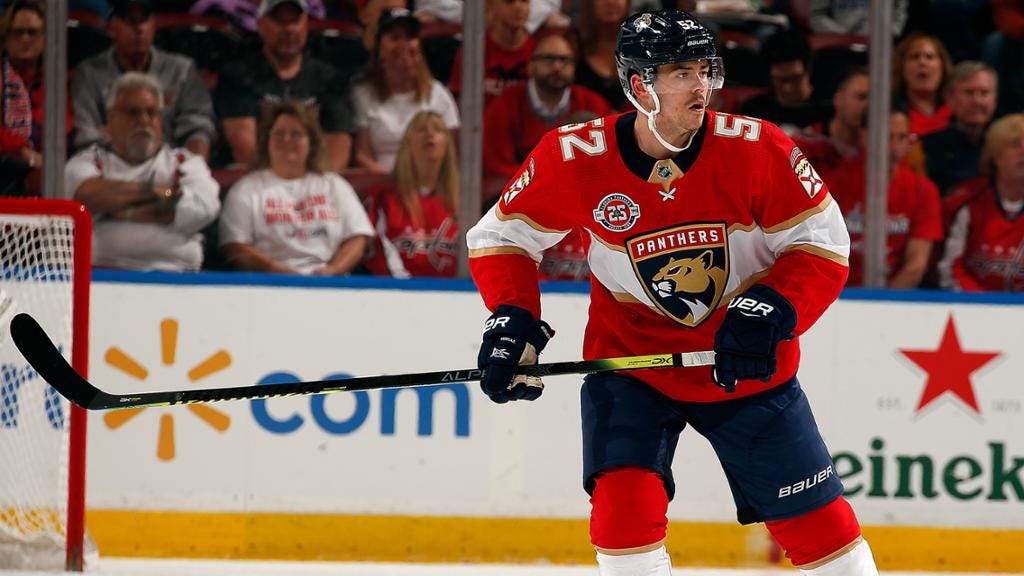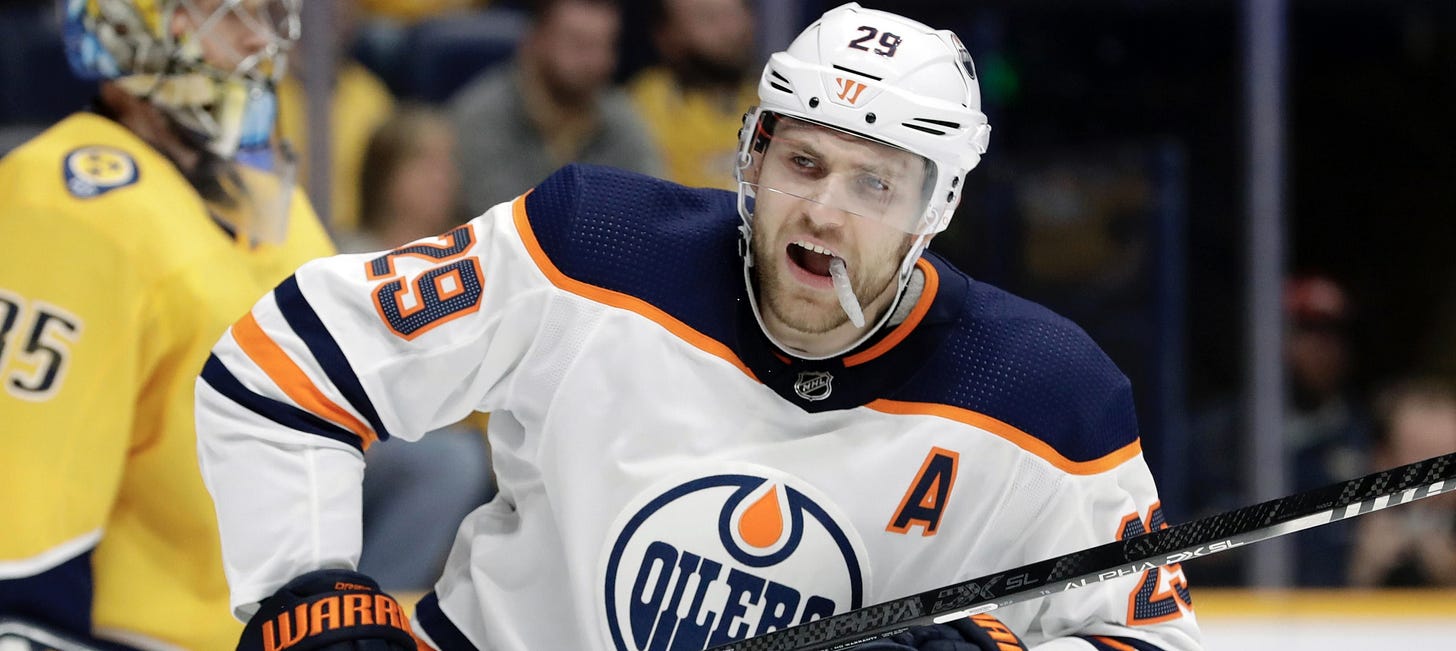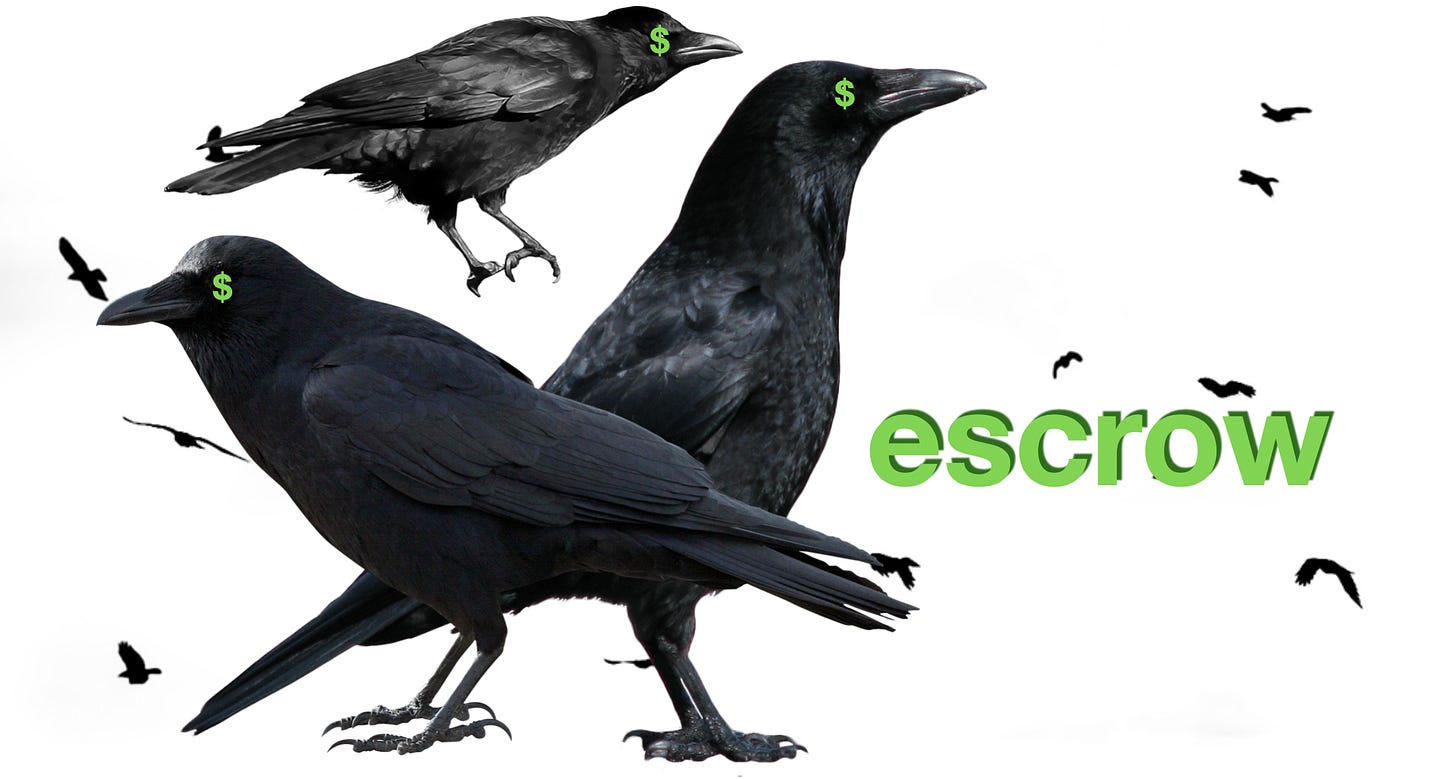Tee Gee Eye Eff, Baby. We’ve got news, and also I, a person who really ate it in my engineering accounting class, attempt to make sense of “what’s an escrow?”
news roundup
The NBA has approved a December 22 start date, so maybe this means there’ll be an NHL start date soon?
Bill Daly, per Pierre LeBrun, says the NHL is still targeting January 1
All the arbitrations are done, and 25/26 were over before they began
Mackenzie Weegar settled with Florida on a 3 year contract at 3.25M AAV
Brendan Lemieux settled with the Rangers for 2 years at 1.55M AAV
And speaking of contracts, Dom Luszczyszyn at The Athletic graded each team’s contract efficiency for this year and that article is here. First place: the Boston Bruins. Last place: the San Jose Sharks.
Here’s the spreadsheet.
I regret to inform you that Tony DeSaidSlursInJuniors is back on Twitter. Anyway. That’s enough on that.
Courtney Szto at Queens University has done a lot of good academic work on minorities in sports, and shared her students’ research blogs about some BIPOC athletes here. Some are hockey players
About brains:
Rick Westhead at TSN recently published a book about Joe Murphy and how/why things went so badly for him in retirement. It’s sad, and also could maybe have something to do with all the concussions he had, and there was a piece in The Star about the book and that is here.
James Mirtle at The Athletic published an article a year ago today about Ryan Crowther, a former OHL (and other minor leagues) player who died in 2016 due to drug and alcohol abuse following years of severe post concussive symptoms. It’s sad, and there are a lot of points where if things were even slightly different, it would have changed the whole story.
There was also a new study put out in the Athletic Training Education Journal (which I caught because Rick Westhead shared it) regarding 16,000 high school athletes and returning to play after concussions. The key point Westhead pulled out was that 36% of 408 male hockey players weren’t cleared within 2 weeks, and 5.2% weren’t cleared within 5.
The OJHL is returning to play, and they’re doing things a little different on account of the whole coronavirus situation. I’d expect similar rules changes in other junior leagues, maybe?
“From an enhanced player safety perspective, the approved 5-on-5 regulations include:
Elimination of post-whistle scrums or altercations.
No body contact.
All OJHL team officials, volunteers and support staff agree they will comply with all laws of Ontario, the municipality and Regional Public Health Authority where the game is being played.
Enforcement of all players wearing an approved “bubble” face mask and facial covering.
The number of players allowed to dress as well as bench seating requirements will depend on the facility structure and Public Health Unit.
Masks mandated to be worn at all times in dressing rooms and other common areas in and around the building.
Enhanced cleaning and disinfectant process in frequent, high touch areas.
Team benches must be disinfected at the end of each period.”
stuff watch
Hey Connor McDavid (EDM) is good at hockey, who knew this?
Related- do you want to watch a montage of Leon Draisaitl working out? NHL Germany wants to show you one!
Bark Boeser, courtesy of USA Hockey on Twitter dot com, a Good Boy!
There are 12 Capitals prospects playing right now in various leagues, and here’s how that’s going
Here is Pavel Buchnevich (NYR) in Russia, and also guys skating with tires?
A construction update for the Henderson Silver Knights
how stuff works
“A. escrow and B. escrow”-Jonathan Toews, when asked about the biggest labor issues
The word “escrow” comes up 120 times in the most recent CBA, and 45 in the MOU extension from this summer. We have seen Artemiy Panarin complain about it, we have seen Ryan Kesler fight with people on Twitter dot com about it, but what is it and why do players hate it so much?
Short answer: They hate it because it takes their money
What is this and where did it come from?
In the 2011-2012 season, prior to the last lockout, players got 57% of hockey related revenue (HRR) and owners got 43%. Following that lockout, the current escrow system made it into the CBA as a little something nice for daddy. The owners and the players have to each get 50% of HRR now, regardless of what that revenue is. Since the league can’t really know what HRR is going to be in a given year, it also can’t know whether total player salaries will exceed 50% of HRR, and so it withholds x amount of each player’s salary until it does know. That’s escrow. The percentage withheld is adjusted 4 times each year to account for changes to projected HRR.
HRR, by the way, is difficult to get a number on if you are, for example, a person with a newsletter and not a person in an NHL office. It includes stuff like concessions and merchandise sales and tickets and TV revenue, and that’s all fairly straightforward, but also includes things that are a little more complicated. For example, Capital One pays for naming rights on the arena that the Capitals play in. Scotiabank pays MLSE for naming rights for where the Leafs play. Is that HRR? Sort of! Because each of those hockey teams shares a building with a basketball team, that naming rights revenue is split. I am sure there is quite a lot of haggling about who gets what. It’s important to note, also, if you are not a money math person (I am not!) that revenue is not profit. It’s just all the money that comes in. Also, the salary cap is set based on the previous season’s revenue. The cap is 15% above the midpoint, and the cap floor is 15% below.
Can you give me an example?
If every team were to spend to the 81.5 million dollar cap, total player salaries would be a little over 2.5 billion dollars. If HRR in that year were to be, say, 4.8 billion dollars, the player share and the owner share would each be 2.4 billion. So the players would owe the owners 100 million dollars, and that would come out of the escrow pool. Let’s say the escrow withholding was 12%. This doesn’t entirely work because division isn’t associative, but based on 700 NHL players with a median salary of 2.78 million, the escrow pool would be in the ballpark of 233 million dollars. 100 million of those dollars in this case would go to the owners, and the other 133 million goes back to the players, proportional to their salaries. The owners’ half is also split somewhat proportionally, but that’s more complicated and I do not know about it.
With the same 233 million dollar escrow pool, if HRR were 5 billion dollars, players would get their entire escrow contribution back, because 2.5 is half of 5. If it were more, they’d get bonus money. If it were, say, 4 billion, players would owe the owners 500 million because their share would be 2 billion, and would have to cover the difference of 267 million on top of the withheld escrow pool of 233 million.
***quick labor digression***
Something I did not think of before looking into all of this was that this is really a system that divides the union and pits its groups against each other. Players under contract will always want the salary cap kept low, because that keeps the total player earnings amount lower, and means they’re more likely to be at or under 50% of HRR and will lose less to escrow. Free agents, on the other hand, sure would like the salary cap to go up, because teams need to have cap space to pay them.
What’s different in the extension/because of covid?
The MOU/CBA extension that passed with return to play had to account for the reality that the NHL, a league that is 50% gate driven, will see significant revenue losses because people can’t, ya know, enter the gates right now, and may not be able to for some time.
Let’s start with the flat cap. The salary cap will stay at 81.5 million dollars until HRR is between 3.3 billion and 4.8 billion dollars. It was previously in the 5 billion dollar ballpark. Once it’s in that range, the salary cap goes up to a prorated amount under 82.5 million dollars. When HRR exceeds 4.8 billion dollars, the salary cap will go up by 1 million every year until the players clear all their escrow debt.
The players also got a 20% cap on escrow in, but gave up a 10% salary deferral for next season. Over three years, they’ll get this deferral back in installments, but this temporary concession helps offset the fact that teams simply won’t be making money in the near future but will still have operational costs. Escrow for the 2020-2021 season is 20%, and is projected to be between 14 and 18% the following season, 10% the season after that, and 6% for each of the 2023-24, 2024-25, and 2025-26 seasons. I guess we’ll see what happens. This works well if things rebound quickly, and with a new North American TV deal on the horizon, maybe they will, but who knows.
questions, comments, concerns, suggestions?
the mailbag is here, you can send in an anonymous comment card, or:



